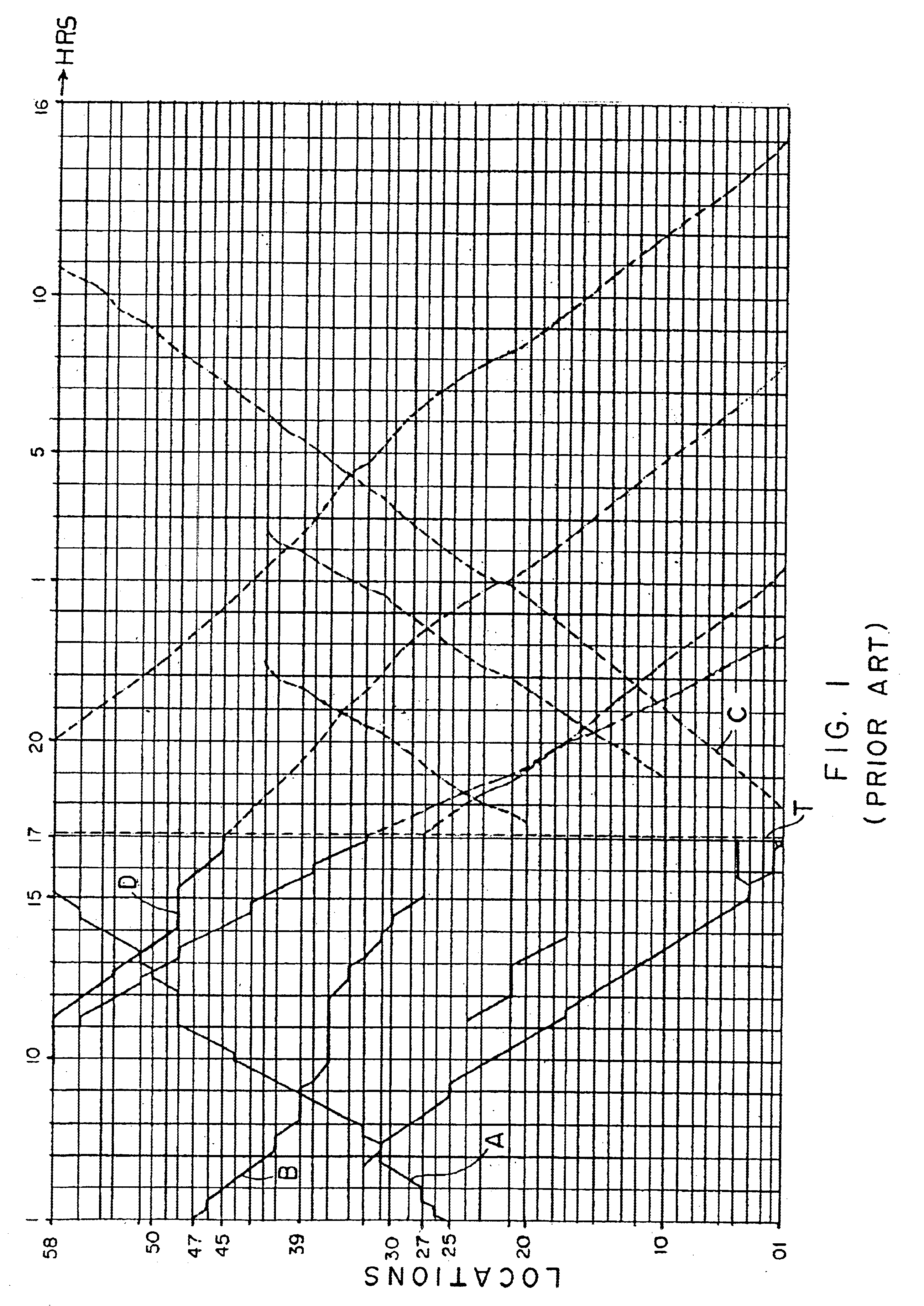Integrated railroad system
a railroad system and integrated technology, applied in the field of railroad operation, can solve the problems of conservative approach, delays and suboptimal corrections, and time-consuming for planners and dispatchers
- Summary
- Abstract
- Description
- Claims
- Application Information
AI Technical Summary
Benefits of technology
Problems solved by technology
Method used
Image
Examples
Embodiment Construction
As used herein, the term "vital sign" of equipment refers to important operating variables such as pressures and temperatures of hydraulic, water and fuel systems, generator and battery voltages, headlight sensing units, hot-box readings, and any other operating parameter deemed important for safe and efficient maintenance and operation. The term "train control signals" refers to signals provided by the system to monitor and remotely control the safe operation of the train; for example, speeds are controlled to prevent exceeding pre-set limits related to train composition and track condition, and the braking system is monitored for remote override for emergency braking. The term "wayside condition signals" refers to signals provided by the system to monitor the condition or state of equipment and sensors situated along the track system, such as the position of the gate at crossings, the state of derailment detectors, the position of switches and the state of corresponding electric l...
PUM
 Login to View More
Login to View More Abstract
Description
Claims
Application Information
 Login to View More
Login to View More - R&D
- Intellectual Property
- Life Sciences
- Materials
- Tech Scout
- Unparalleled Data Quality
- Higher Quality Content
- 60% Fewer Hallucinations
Browse by: Latest US Patents, China's latest patents, Technical Efficacy Thesaurus, Application Domain, Technology Topic, Popular Technical Reports.
© 2025 PatSnap. All rights reserved.Legal|Privacy policy|Modern Slavery Act Transparency Statement|Sitemap|About US| Contact US: help@patsnap.com



